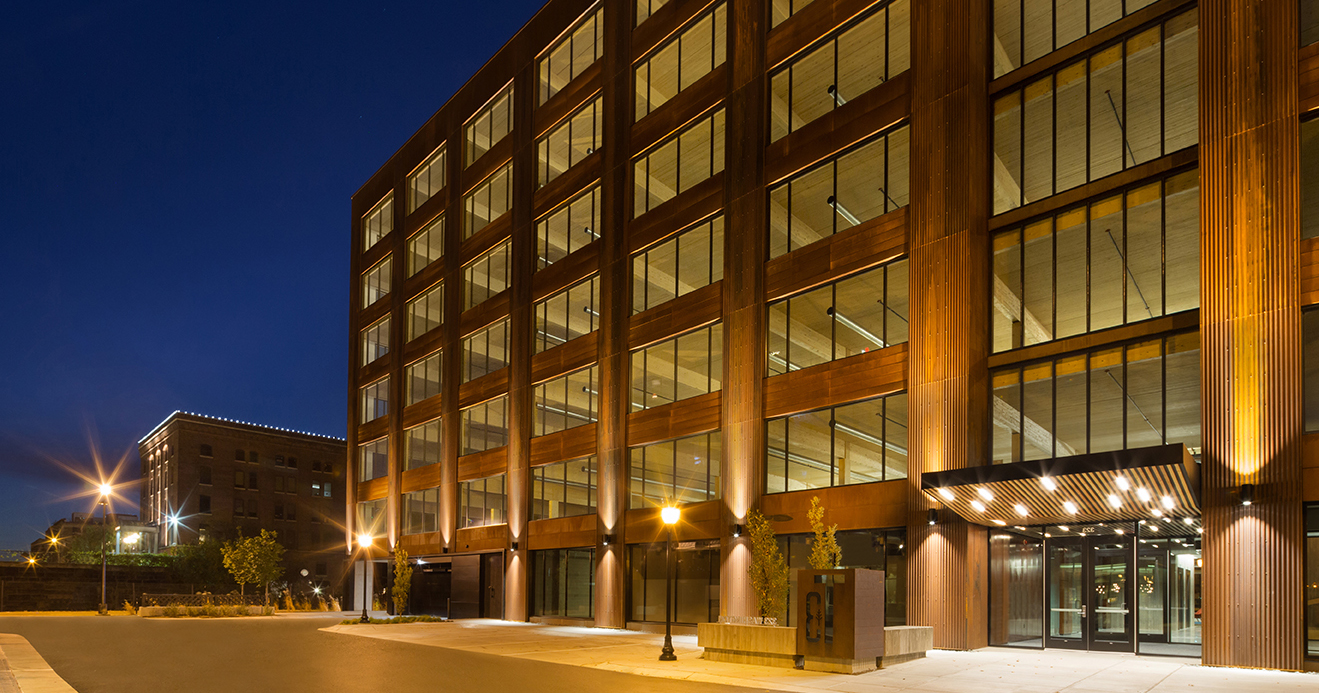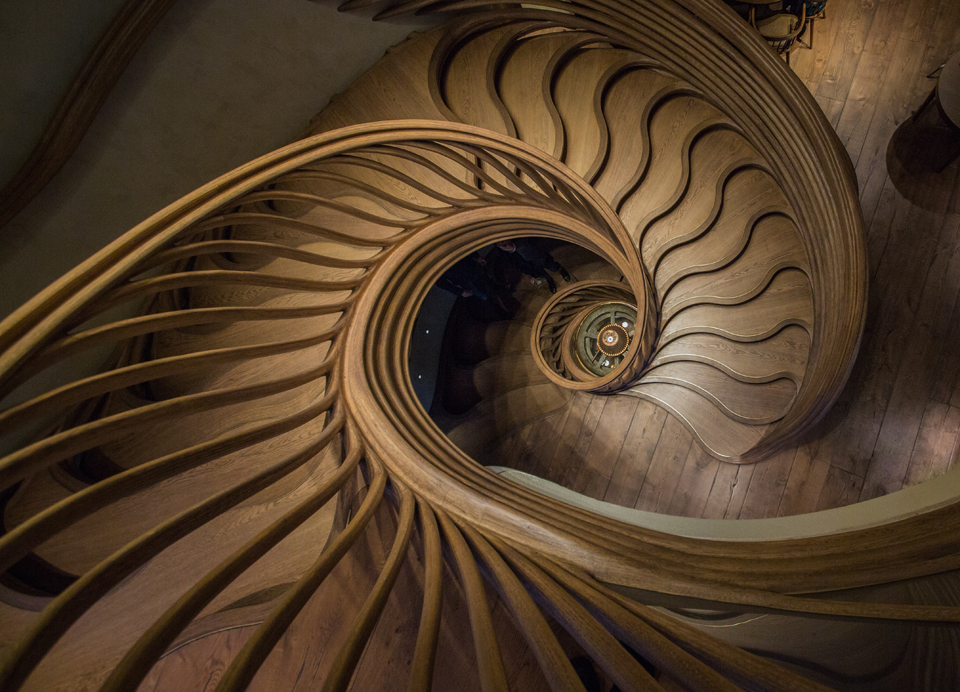Last chance: The 14th Architizer A+Awards celebrates architecture's new era of craft. Apply for publication online and in print by submitting your projects before the Final Entry Deadline on January 30th!
The climate crisis has caused both individuals and industries to rethink lifestyles across the globe. Even for those not actively making changes, it is hard to ignore the worsening weather, natural calamities, rising water levels and increasing costs of living. It has become imperative to find alternatives to current living systems that are energy-efficient, self-sustainable and can adapt to growing population density and food requirements.
Architects have been imagining the major problems that will challenge cities in the future and have tried to tackle those by turning the idea of buildings as we know it on its head. This has been done in a variety of ways; some have proposed enormous vertical cities, a few have looked into environments that promote collaboration and connections and others have conceptualized floating islands. Below are just a few examples that show that there is still hope for a prosperous future.
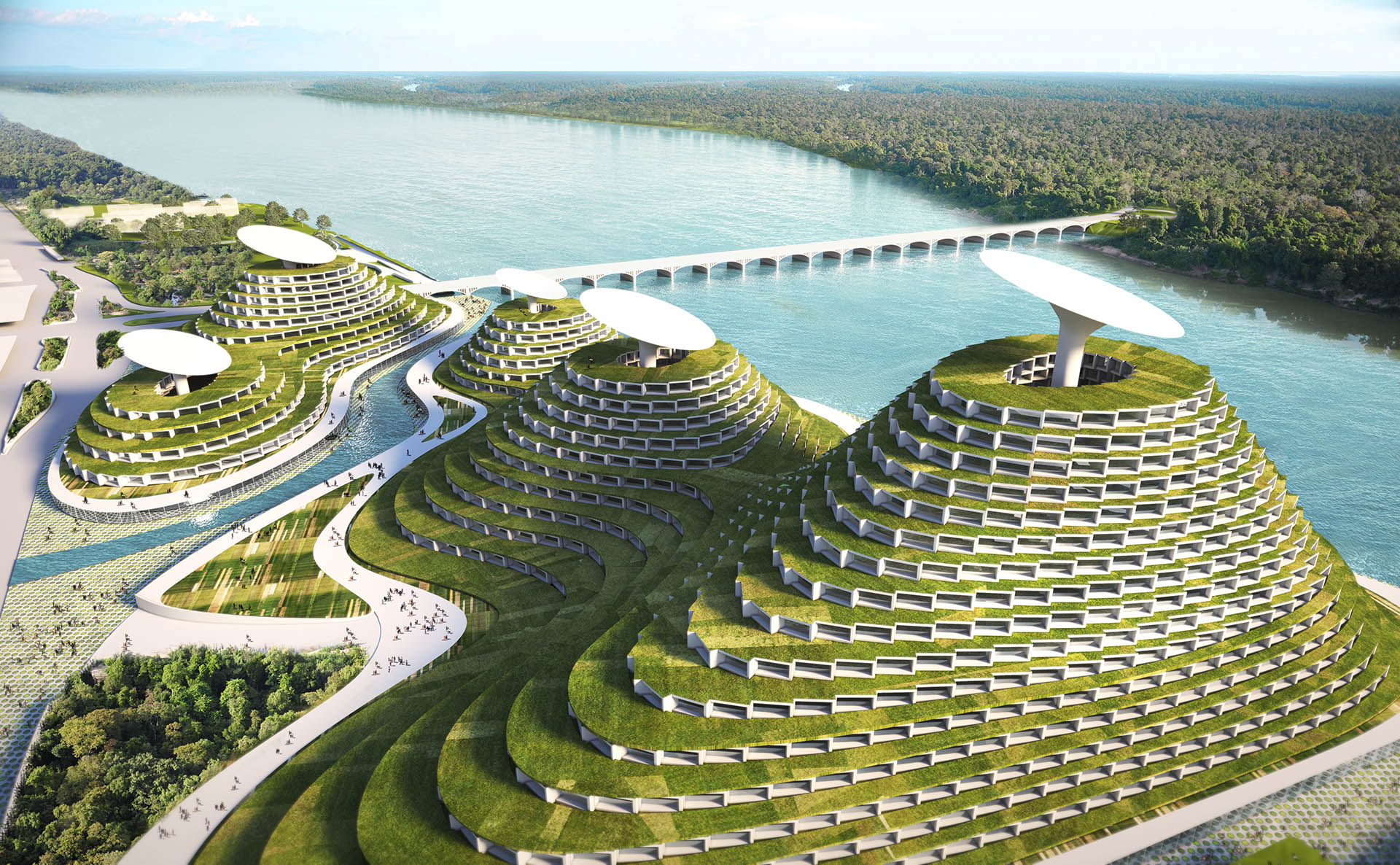
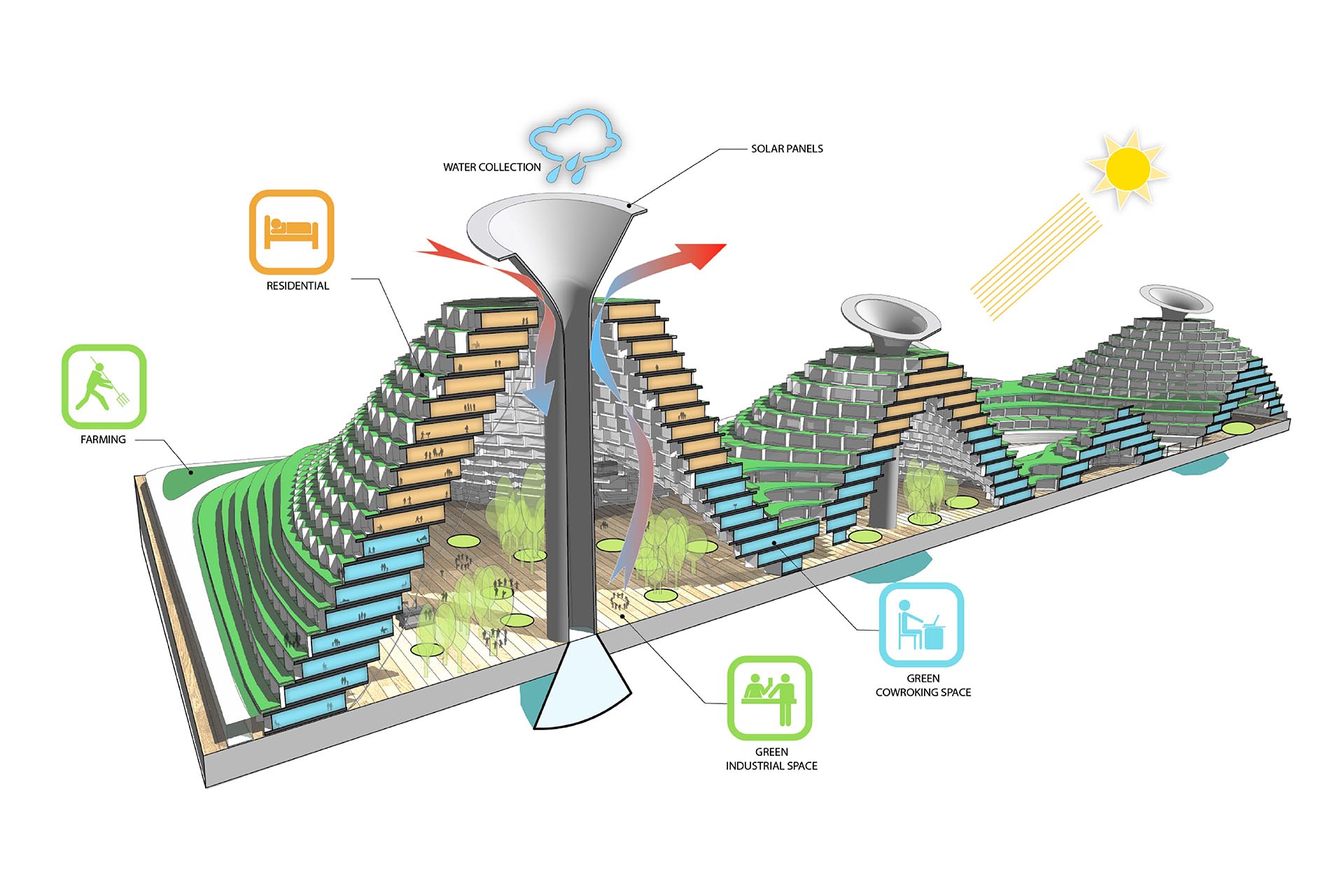 Smart City by Avoid Obvious Architects, Detroit, Michigan
Smart City by Avoid Obvious Architects, Detroit, Michigan
The firm’s vision for a part of Detroit is a complex that combines commercial, residential, industrial and agricultural functions. The building creates an artificial hilly terrain. The sloped form creates several terraces that can be used for urban farming. The upper part of the mound houses the residential spaces and the lower portion makes up the commercial areas. These are located only along the edge of the mountain to ensure these spaces get natural light and ventilation. Because of this, the hollow core makes a lot of room for green industrial functions. Furthermore, a long funnel running down the center collects rainwater and also holds the solar panels that can connect to the power grid.
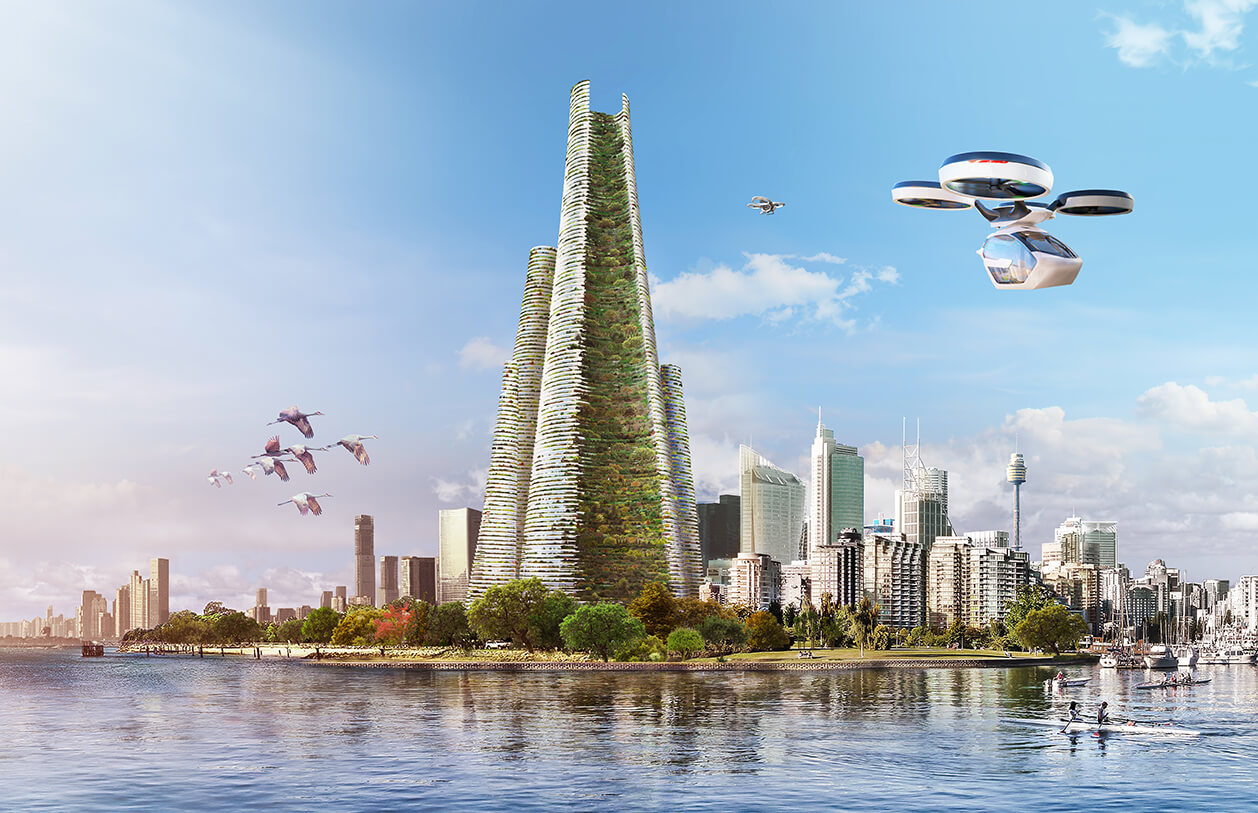
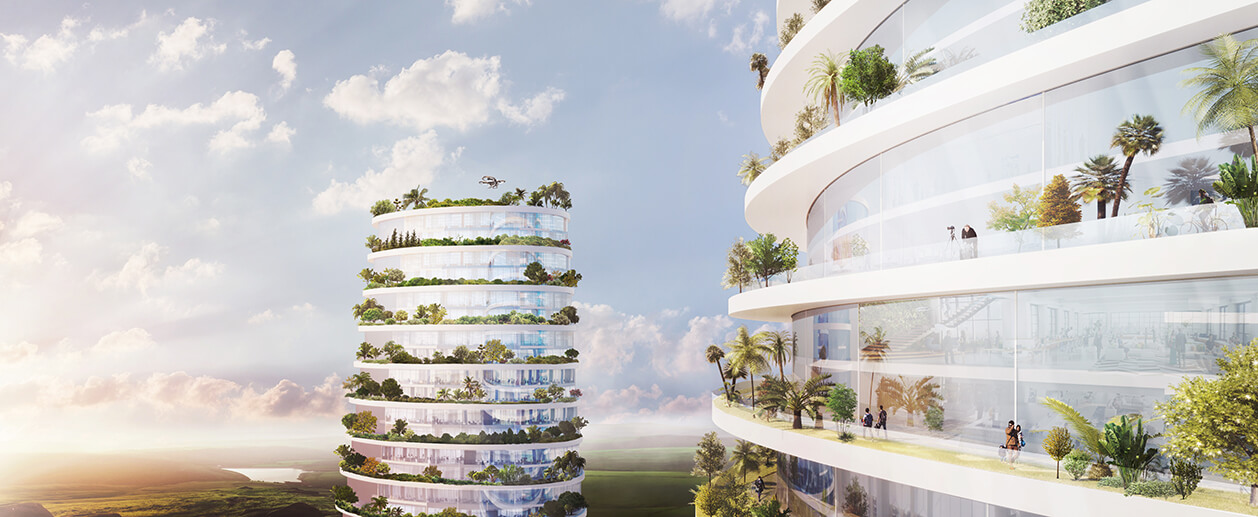 THE LINK City-Forest by Luca Curci Architects
THE LINK City-Forest by Luca Curci Architects
With the understanding that population density will be a problem we will grapple with in the future, Luca Curci Architects devised a vertical city that can accommodate 200,000 people and create an environment conducive to a healthy lifestyle. It is the amalgamation of an urban landscape and a forest that purifies the air for those living there. The plan also breaks down the idea of the suburbs and builds a more diverse and connected community.
The four conical buildings within the complex have a maximum height of 300 floors and are all connected to nature. The scheme comprises one residential building and three others that hold all the commercial, institutional and administrative blocks. It also incorporates spaces for farming and food production to ensure self-sustainability.
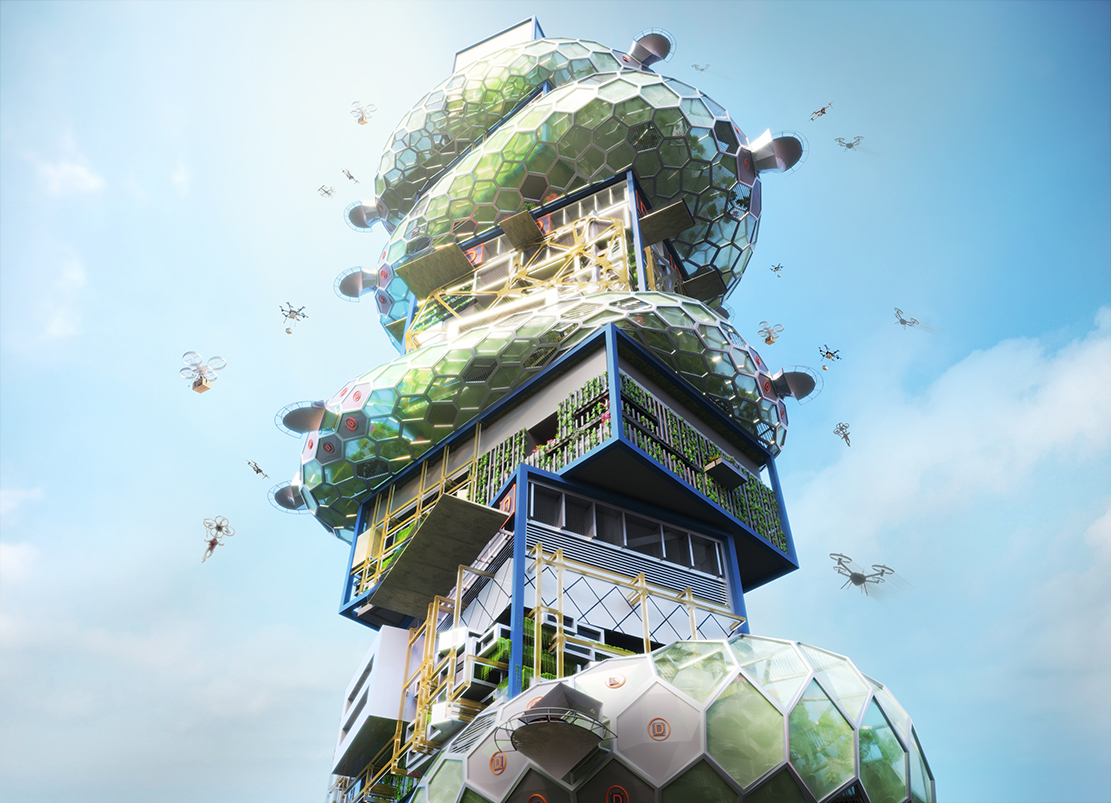
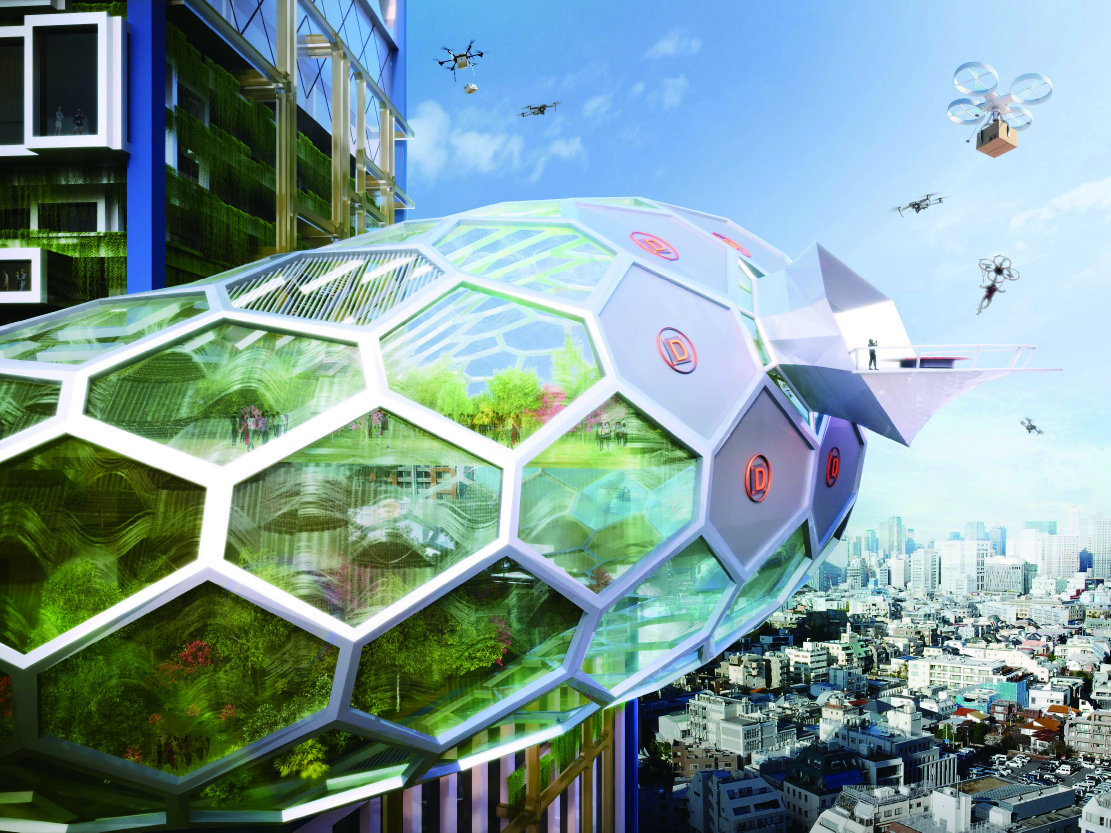 SHIBUYA HYPER CAST. 2 by noiz, Tokyo, Japan
SHIBUYA HYPER CAST. 2 by noiz, Tokyo, Japan
A single futuristic tower combines the best aspects of the current site. It has been broken into five parts, each representing a different district. These blocks are separated by bubble-like green zones that can be used to produce food throughout the year. The tower also aims to integrate technology and human activity by using human elevators, drone shafts and elevators for digital agents in the same building. To ensure a better quality of life, the firm has also included hospitality and wellness functions in the plan.
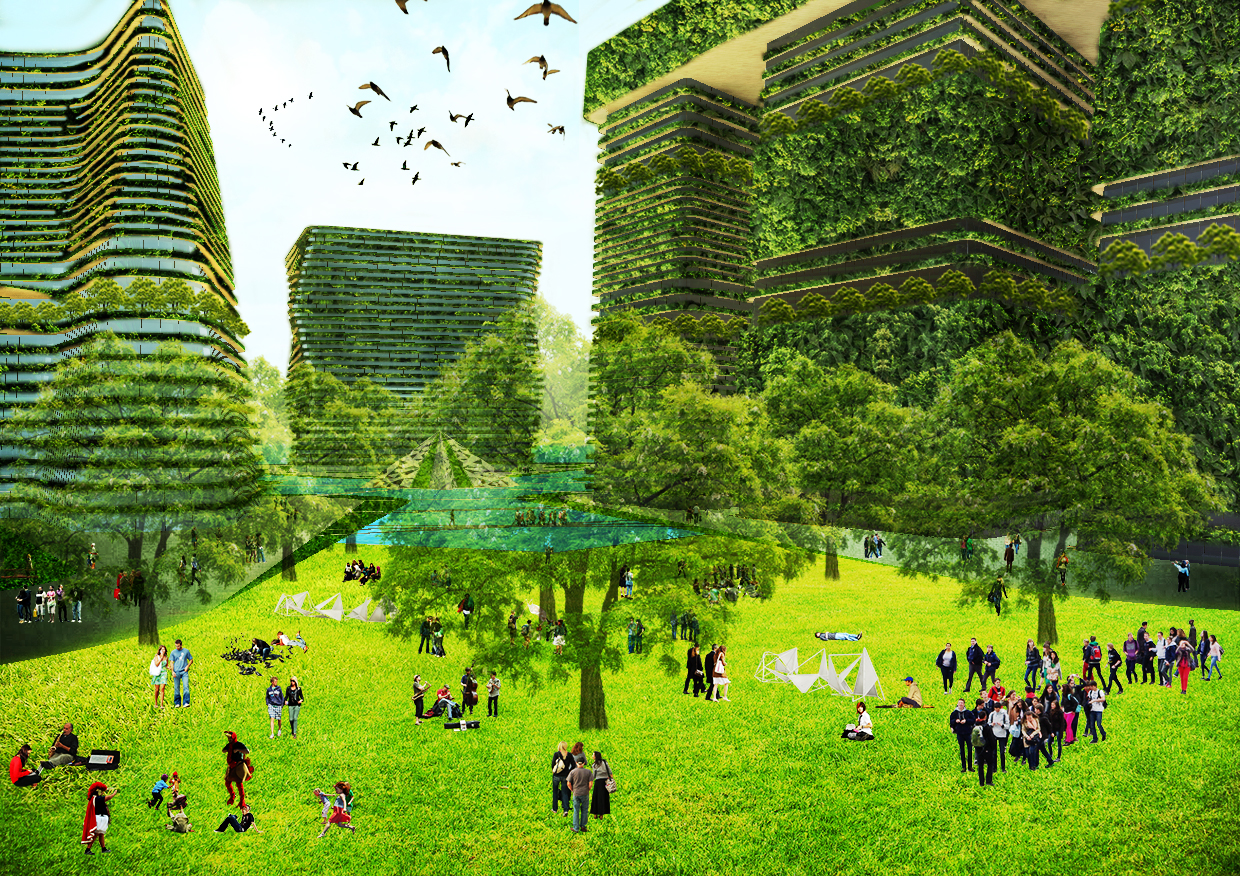
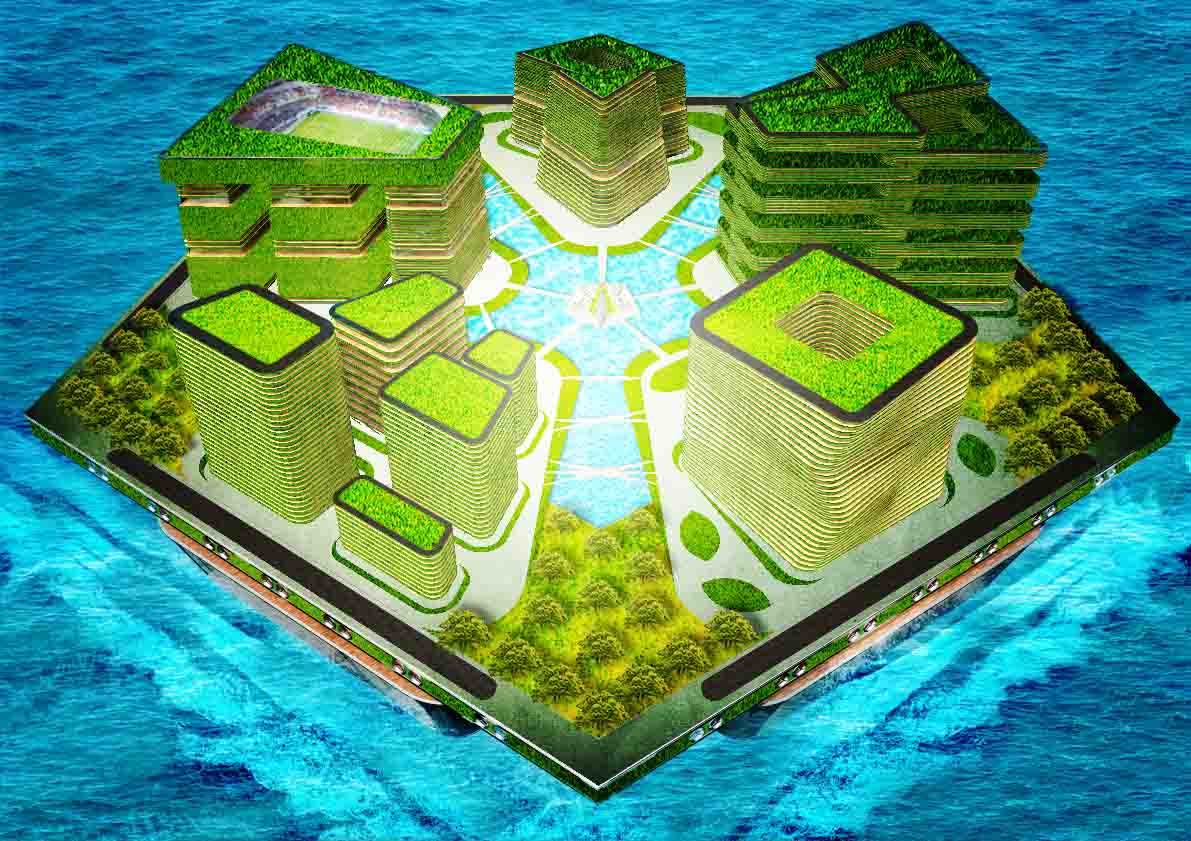 ASTEROIDEA – Floating City by Hermann Kamte & Associates
ASTEROIDEA – Floating City by Hermann Kamte & Associates
This futuristic city is a vision for a world ravaged by problems due to climate change. Hermann Kamte & Associates imagine an amphibian city that can be a refuge for those who have left their homes due to rising sea levels and harsh climatic conditions. This modular floating city can accommodate about 50,000 people. Keeping sustainability in mind, the starfish-inspired block incorporates renewable energy sources and efficient recycling and waste management systems as well. Different buildings on the island include administrative, cultural, research, sports, educational and recreational functions.
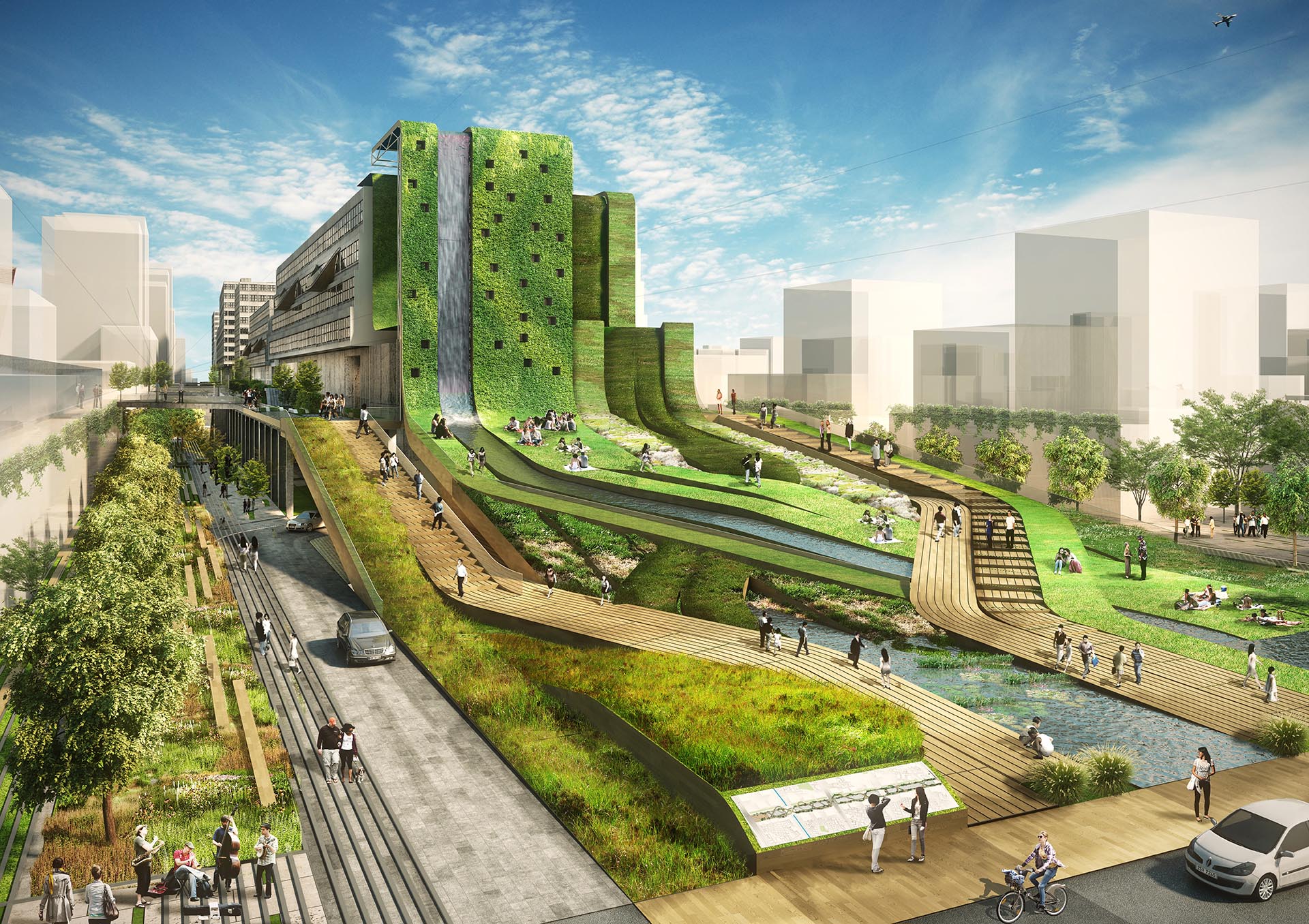
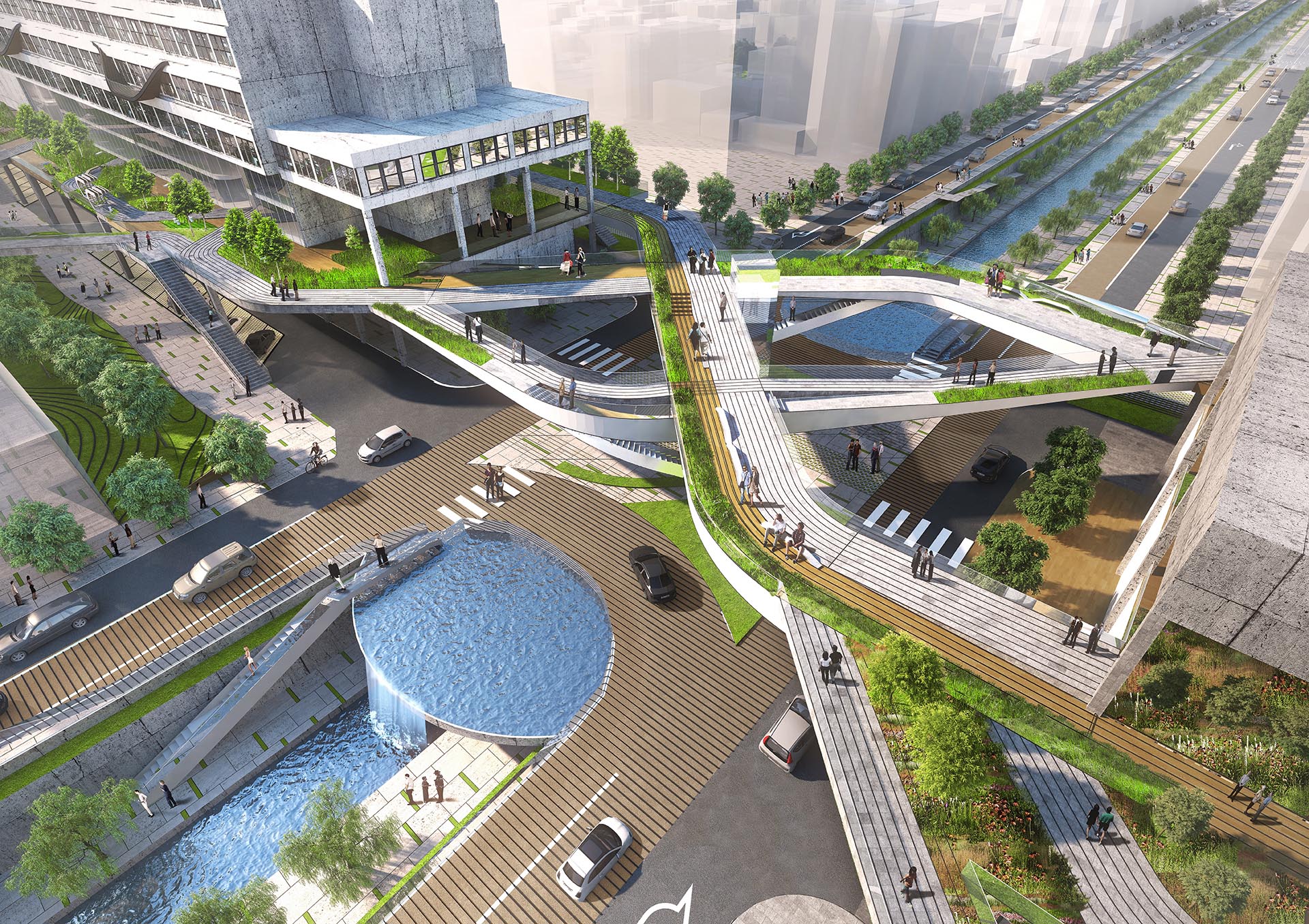 Seun City Walk by Avoid Obvious Architects
Seun City Walk by Avoid Obvious Architects
This proposal focuses on collaboration and customization. The masterplan is a long strip with spaces for work, play and rest. These large blocks are intertwined with layers of transport or walking routes that follow a crisscross pattern across the strip. There are several green spaces on the periphery as well as along the connecting routes.
To encourage healthy and sustainable lifestyles, the studio has incorporated several bicycle routes and parking spaces. They have also tried to bring in cultural education by introducing floating art displays, theaters and libraries. Some other elements of the scheme include meeting spaces, sunbathing platforms, playgrounds and urban farms.
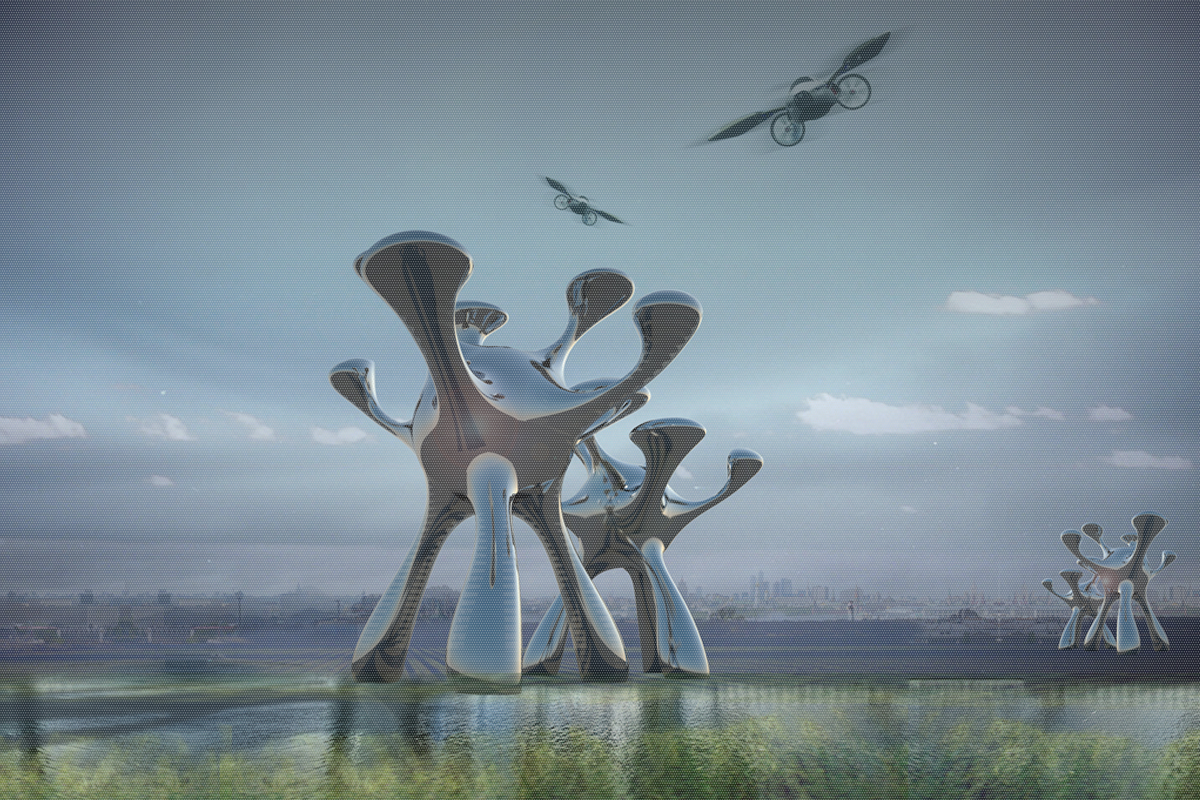
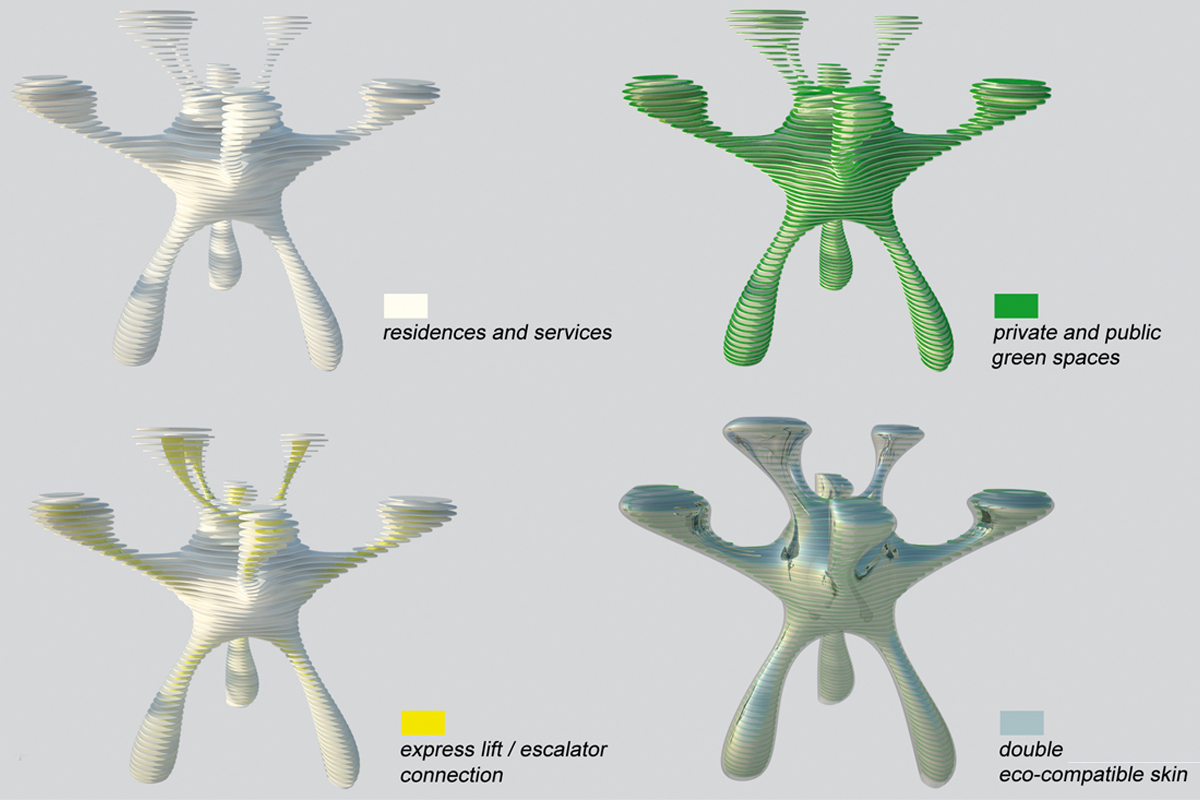 Organic City by Schiavello Architects Office – SAO architecture & design
Organic City by Schiavello Architects Office – SAO architecture & design
The Organic City is imagined as a large bulbous mass that takes inspiration from the turrets in traditional Russian architecture and turns it into a futuristic interpretation. It serves about 10,000 residents and provides spaces for recreation as well. The movement through this mass is planned as a journey through an urban landscape with different topographies.
Private and public green spaces are scattered throughout and the lifts and escalators are placed along the vertical curves. Tying the whole idea together is a diamond-cut exterior shell that is designed to repel snow and collect solar energy through photovoltaic cells.
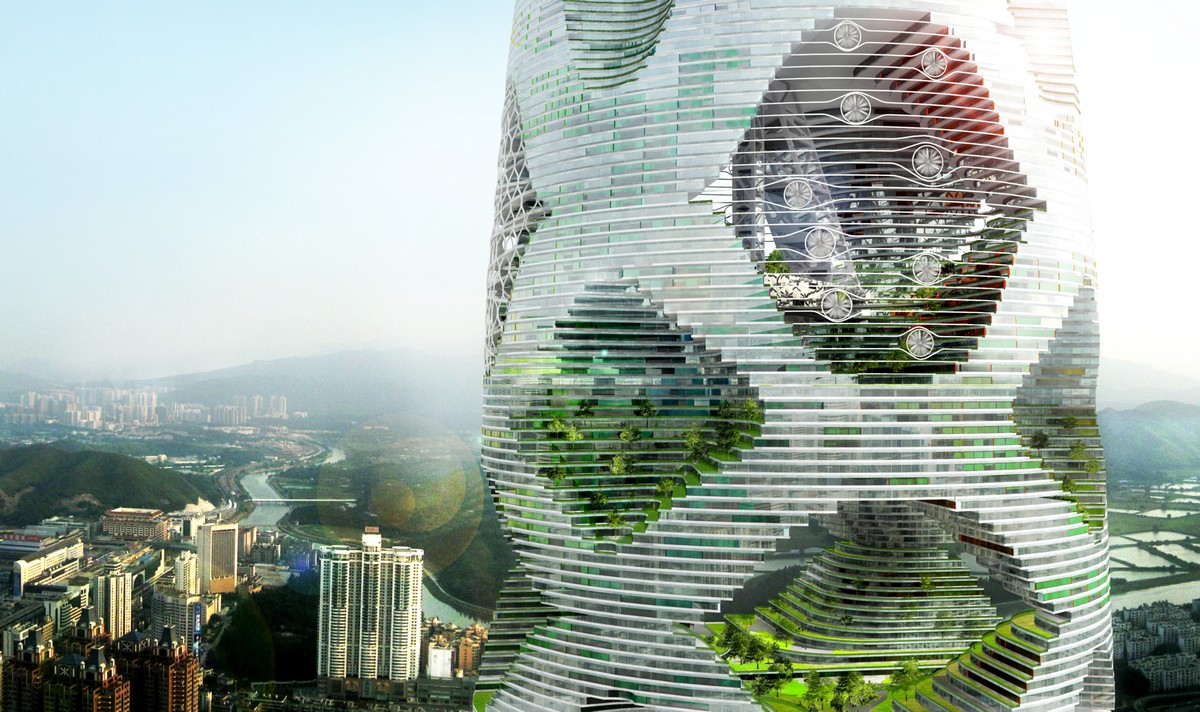
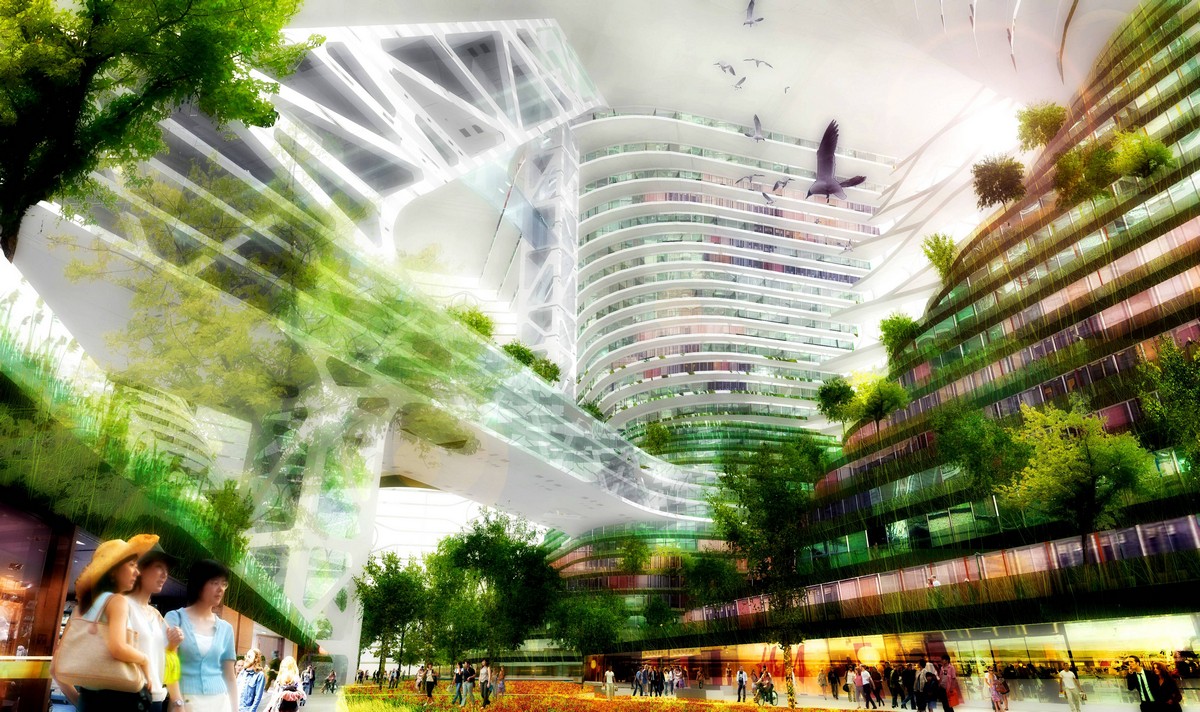 Shenzhen Logistic City by JDS ARCHITECTS
Shenzhen Logistic City by JDS ARCHITECTS
JDS Architects wanted to make green spaces the focal point of buildings. They did this by integrating a green landscape within the tower itself. These verdant layers continue throughout the building in a mountain-like pattern. There has been provision for light and ventilation to reach the core by means of large cutouts on the exterior that follow the contours. The urban intervention also has large turbines in these cavities to generate wind energy, making it self-sustainable.
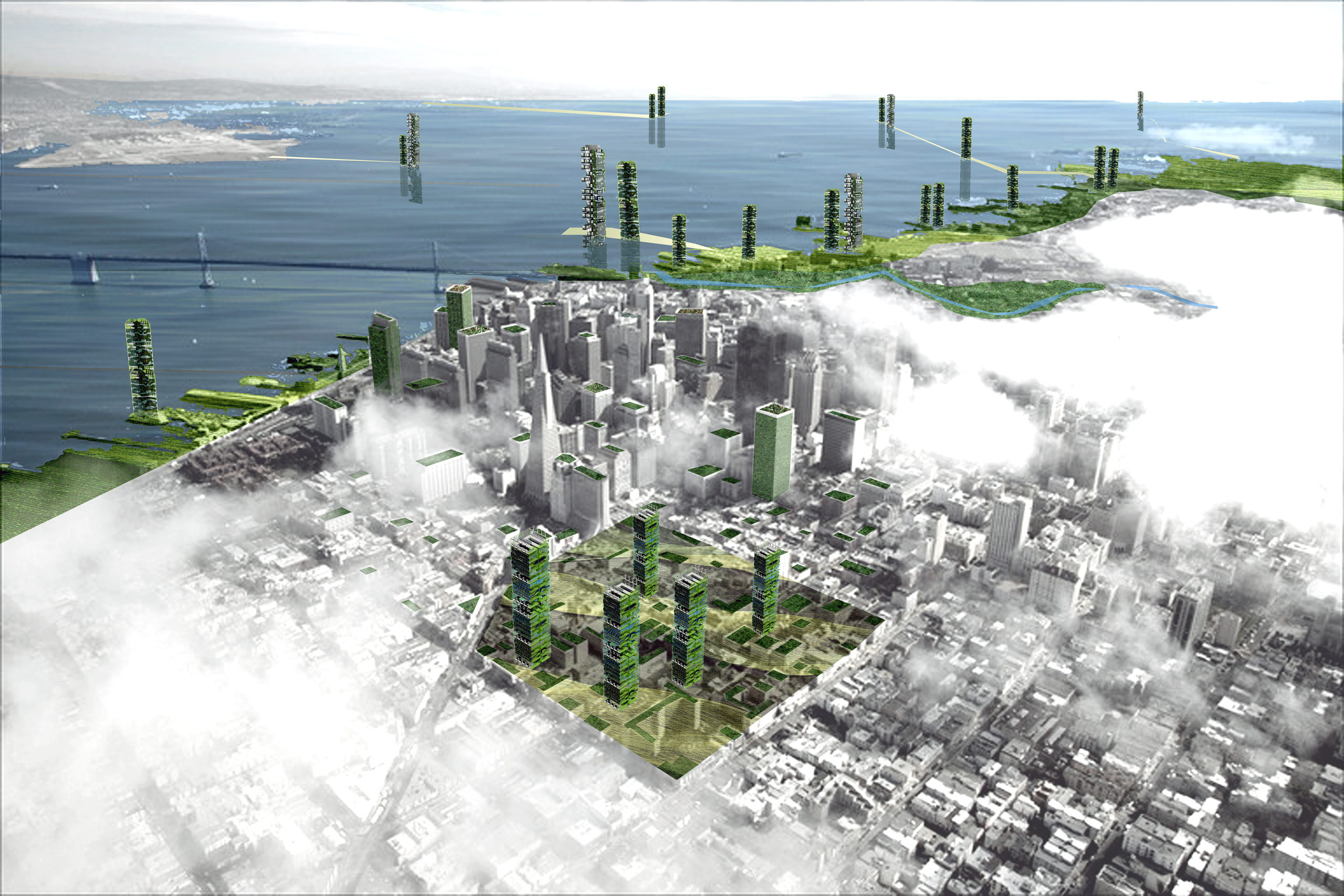
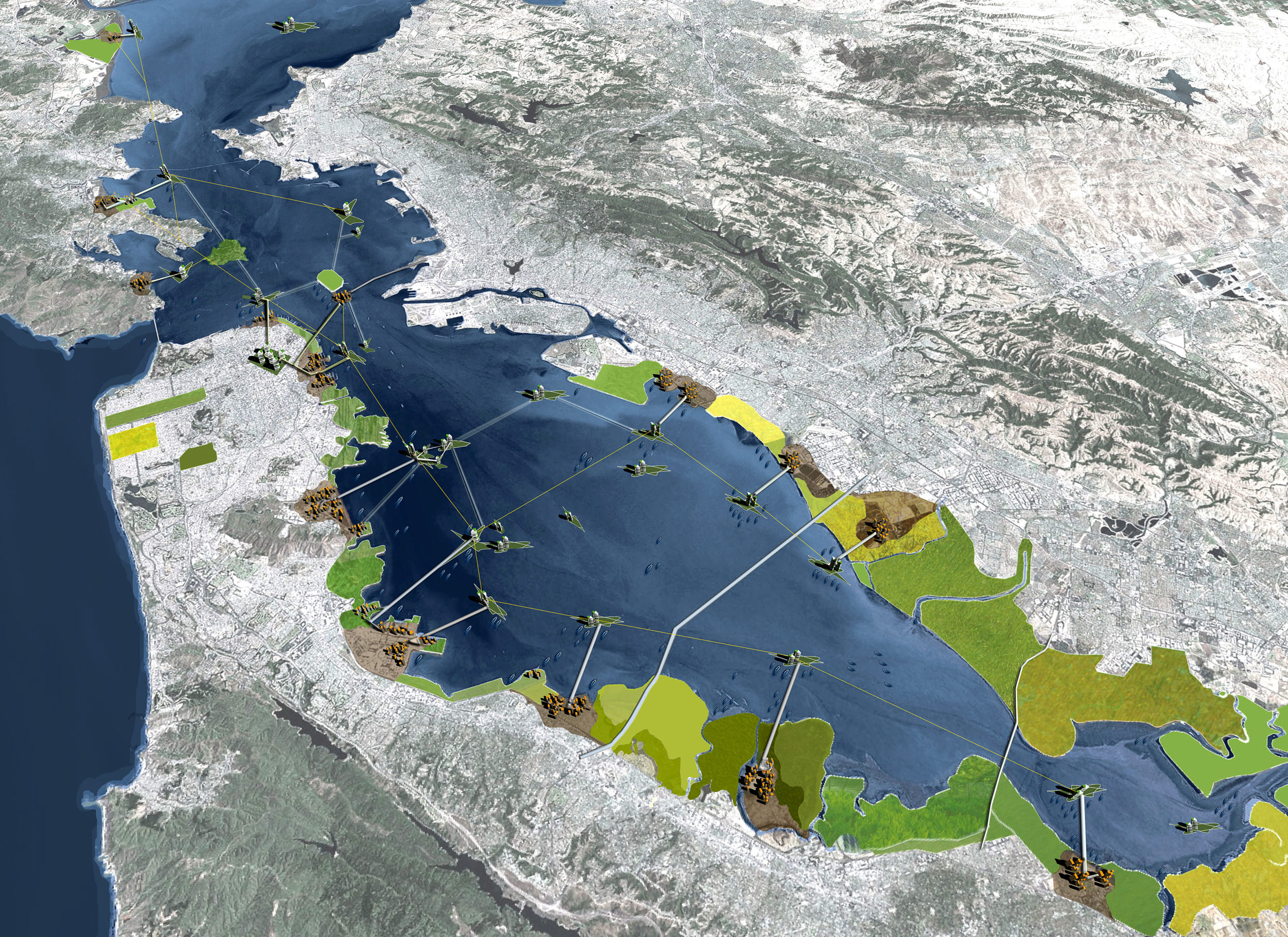 City of the Future by Fougeron Architecture, San Francisco, California
City of the Future by Fougeron Architecture, San Francisco, California
This proposal is set in the year 2108. The biggest challenge we might face is proving food for the population, especially since most of the world might be urbanized. The firm’s version of San Francisco aspires to be a model sustainable city. Here, agriculture is part of the urban landscape by means of vertical farming systems as well as reclaimed water and renewable energy use. Agricultural centers will be positioned at key nodes in overall circulation to make food distribution easier, faster and more cost-effective. They have planned a floor-wise distribution of crops such as apples, tomatoes, carrots, lettuce, etc within towers to ensure a wide variety of food options for those living in the area.
Last chance: The 14th Architizer A+Awards celebrates architecture's new era of craft. Apply for publication online and in print by submitting your projects before the Final Entry Deadline on January 30th!
 ASTEROIDEA - Floating City (Shortlisted - Jacques Rougerie Foundation)
ASTEROIDEA - Floating City (Shortlisted - Jacques Rougerie Foundation)  City of the Future
City of the Future  ORGANIC CITY
ORGANIC CITY  Seun City Walk
Seun City Walk  SHENZHEN LOGISTIC CITY
SHENZHEN LOGISTIC CITY  SHIBUYA HYPER CAST. 2
SHIBUYA HYPER CAST. 2  Smart City
Smart City  THE LINK City-Forest
THE LINK City-Forest 